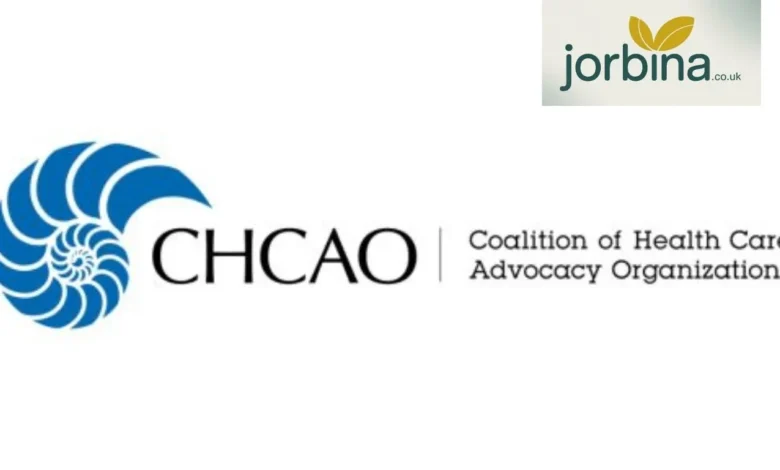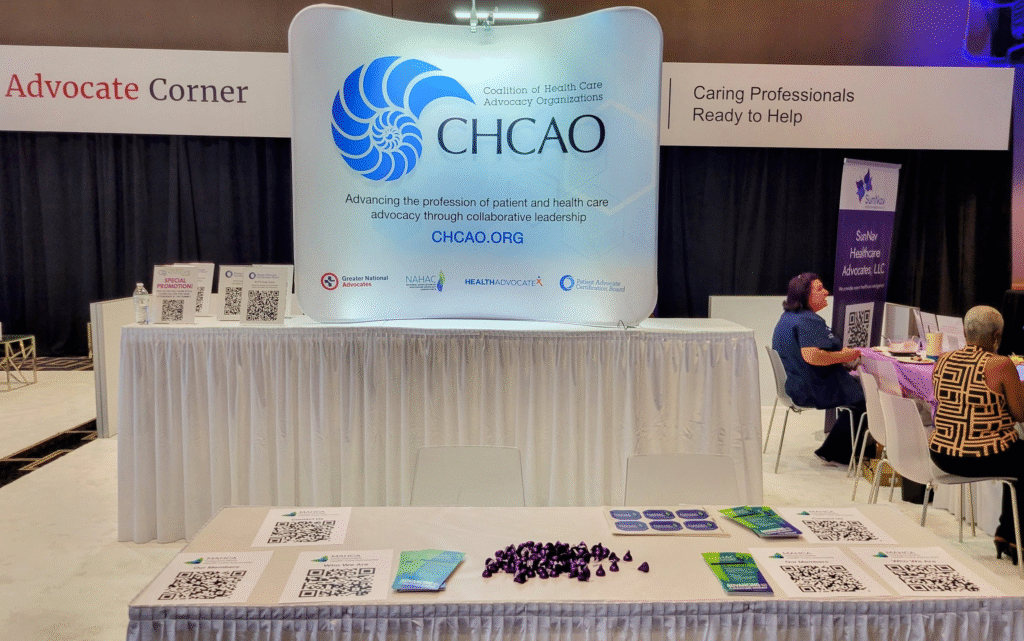How CHCAO Is Quietly Shaping the Future

Have you ever faced a moment in health care where you felt unheard or confused about what to do next? Maybe you’ve struggled to understand insurance paperwork or find someone to help when doctors seem too busy to explain. If so, you’ve already brushed up against the world that CHCAO is quietly trying to change. The Coalition of Health Care Advocacy Organisations, better known as CHCAO, isn’t loud about what it does, but its influence is spreading. Let’s walk through how it’s helping to shape the future of health care, what role groups like NAHAC and HealthAdvocateX play, and why patient advocates are becoming essential allies for anyone navigating the system.
What CHCAO Really Stands For
CHCAO brings together several major advocacy organisations under one banner. Its purpose is simple but powerful: unite the voices of patients and healthcare advocates so that people, not systems, come first. By combining efforts, member organisations can share data, build stronger ethical standards, and make sure advocacy is treated as a recognised profession instead of a side job or volunteer effort.
Each member of CHCAO contributes something unique. For example, NAHAC (the National Association of Healthcare Advocacy) focuses on professional standards and education. HealthAdvocateX helps connect patients and carers to advocacy resources in their communities. Together, they form the backbone of CHCAO’s mission to ensure patients have someone on their side no matter where they are or what kind of care they need.
Why CHCAO Matters Now
Healthcare has always been complicated, but over the past decade, it’s become even more fragmented. People bounce between specialists, hospitals, and insurance plans that don’t always communicate with each other. In that chaos, the patient’s voice can get lost. That’s where CHCAO steps in. It’s building a united front to make sure advocacy isn’t just a nice idea; it’s a recognised part of care.
Advocacy as a Profession
For too long, advocacy has existed in the background. CHCAO wants to change that by pushing for shared standards and ethical frameworks. The goal is for “patient advocate” to be a title backed by education, accountability, and respect. That shift is already happening as CHCAO collaborates with organisations like NAHAC and the Alliance of Professional Health Advocates (APHA) to create training models and certification programmes.
Collaboration and Data
Another major strength of CHCAO is data collection. Its surveys and research reports reveal how advocacy affects patient outcomes and where gaps remain. That information helps policymakers see why advocates should be integrated into care teams. It’s a subtle but strategic way to bring advocacy into mainstream health care policy.
How CHCAO Evolved
The story of CHCAO can be broken into several stages, each one building on the last.
Formation and Purpose
In the beginning, different advocacy groups were doing similar work but rarely communicated. Leaders realised they could make a bigger impact together, so they formed CHCAO as a coalition for collaboration rather than competition. This was the first real attempt to create an organised advocacy network that crosses organisational boundaries.
Defining Common Goals
Once formed, the coalition had to agree on what it wanted to achieve. They chose three priorities: raising visibility for advocacy, establishing shared ethical guidelines, and improving training. Those goals became the foundation for how CHCAO operates today.
From Research to Policy
CHCAO’s leadership recognised that data is what turns good ideas into policy. They began gathering stories, surveys, and evidence that show how advocates improve patient satisfaction, reduce medical errors, and save costs. Those findings gave them a voice in policy discussions that once excluded advocates entirely.
Long-Term Vision
The long game for CHCAO is about staying relevant as health care evolves. Whether it’s digital health, mental health reform, or new insurance models, the coalition keeps adapting so that advocacy remains part of the conversation.
How Partner Organizations Strengthen CHCAO

NAHAC’s Leadership
NAHAC plays a vital role in CHCAO’s structure. It focuses on training advocates, setting ethical standards, and supporting professionals who work directly with patients. Its code of ethics helps guide how advocates interact with clients and medical providers. NAHAC also provides educational events and webinars to keep advocates informed about new laws and best practices.
HealthAdvocateX’s Community Work
HealthAdvocateX operates on the ground level. It connects patients, families, and caregivers to advocates and helps them understand their rights within the system. By bringing real-world stories and data into the coalition, HealthAdvocateX ensures that CHCAO stays connected to the people it ultimately serves.
Both organisations bring something essential: NAHAC offers structure and professionalism, while HealthAdvocateX ensures empathy and accessibility. Together, they make CHCAO more than just a network; they make it a movement.
Connecting to Mental Health Advocacy
If you’ve ever searched for “mental health advocates near me”, you’ve probably seen how fragmented mental health care can be. CHCAO doesn’t directly operate local advocacy programmes, but it supports the people who do. By promoting shared standards and raising awareness, CHCAO makes it easier for local mental health advocates to find resources, training, and credibility.
Mental health advocacy often requires sensitivity, privacy, and specialised knowledge. CHCAO helps ensure that even in small community programmes, those advocates are working within recognised ethical frameworks. That helps protect both the client and the advocate.
Free Training and Certification Opportunities
One of the questions people often ask is whether they can find free patient advocate training with certificate programmes. CHCAO doesn’t directly provide these courses, but it encourages them through partner organisations. NAHAC and APHA often highlight affordable or free options for beginners who want to enter the field. Some programmes offer introductory online training and then allow graduates to pursue more advanced certifications later.
The idea is to make advocacy accessible without lowering standards. CHCAO supports the notion that anyone passionate about helping patients should have a path to learn and contribute, no matter their financial situation.
The Rise of Patient Advocacy Courses
More people are recognising that advocacy isn’t just about compassion; it’s a skill. A good patient advocacy course teaches communication, ethics, policy, and conflict resolution. It also covers how to deal with hospitals, insurance companies, and government agencies. Many of these programmes now align their curriculum with CHCAO’s guidelines so that advocates across the country share a common foundation.
That standardisation helps patients too. When you hire an advocate who trained under CHCAO-affiliated programmes, you can trust that they understand privacy, consent, and professional conduct.
How CHCAO Strengthens Patient Advocates

Patient advocates take on a variety of roles. They assist people in understanding their treatment options, navigating complicated diagnoses, and appealing insurance denials. They serve as a link between everyday comprehension and medical terminology. However, a lot of people worked alone with little coordination until recently.
A professional community is offered by CHCAO. It links these people to opportunities for collaboration, ethics advice, and training. A more competent, self-assured, and trustworthy team of experts who are able to communicate in both medical and compassionate terms is the end result.
Where APHA Advocacy Fits In
The Alliance of Professional Health Advocates (APHA) focuses on independent advocates and care managers who run their own practices. They provide business resources, peer support, and marketing help. By working alongside CHCAO, APHA ensures that even private advocates are represented in broader policy conversations.
This collaboration matters because it closes the gap between individual practitioners and institutional advocacy programmes. CHCAO helps align policy with practice, while APHA helps practitioners navigate the business side of advocacy.
The Patient Advocate Bulldog Spirit
Every movement needs people who push hard for change. Within CHCAO’s ecosystem, there are advocates known for being bold, outspoken, and relentless, sometimes referred to as the “Patient Advocate Bulldog” type. That spirit is essential. It’s the energy that ensures patients aren’t ignored or dismissed.
CHCAO embraces that determination while balancing it with ethics and professionalism. The goal isn’t aggression but persistence with purpose.
Challenges and Realities
Of course, building a unified advocacy movement isn’t simple. CHCAO faces several ongoing challenges: defining qualifications for professional advocates, securing funding for advocacy roles, and convincing policymakers to reimburse advocacy services.
There’s also the challenge of inclusivity. Advocacy must reflect the diversity of the patients it serves, culturally, economically, and geographically. CHCAO continues to push for diversity in training programmes and leadership positions so that every voice is represented.
Looking Ahead
The future of CHCAO looks promising. Here’s where it’s headed next:
- Gathering stronger evidence that advocacy saves lives and money.
- Partnering with lawmakers to create funding models for advocacy.
- Expanding training programmes, including free or subsidised certification courses.
- Encouraging partnerships with mental health and community health programmes.
- Connecting advocacy with public health and digital health innovation.
The next few years will likely see advocacy become a formal part of health care teams rather than an optional support.
What This Means for You
If you ever find yourself lost in the maze of modern health care, CHCAO’s work may already be helping you, even if you’ve never heard of it. The coalition’s members have made it easier to find reliable advocates, clearer training pathways, and a stronger professional voice for those who fight for patients’ rights.
This shift isn’t happening in isolation. It’s part of a broader pattern of human-centred innovation. For example, platforms like Jorbina are transforming industries by connecting people with experts who truly understand their needs. Similarly, the story behind The Moment That Redefined Scott Wu’s career shows how one defining choice can set a new standard for leadership and purpose. CHCAO’s evolution carries that same lesson: change happens when people decide to build something better together.
Final Thoughts
CHCAO may not make headlines every day, but its work is changing how we experience health care. By building bridges between organisations, training advocates, and pushing for recognition, it’s creating a future where patients don’t have to face the system alone.
Whether you’re searching for mental health advocates, looking to start a career in patient advocacy, or simply want to understand your rights, CHCAO’s quiet influence is already shaping your options. Its mission is simple but profound: make sure every person in need of care has someone to guide, protect, and empower them through the process. That’s not just the future of advocacy; it’s the future of health care itself.
You do not have enough Humaniser words left. Upgrade your Surfer plan.



